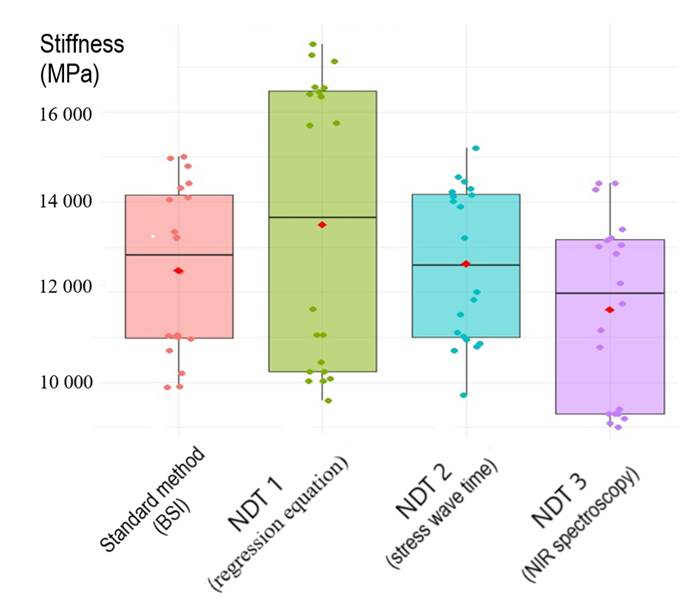ABSTRACT
This study evaluated nondestructive testing (NDT) to estimate the stiffness of Protium puncticulatum (Breu-vermelho) and Micrandropsis scleroxylon (Piãozinho) wood. A total of 100 test samples (20×20×300 mm) were manufactured from the wood of three trees of each species, with the final dimension aligned longitudinally. NIR spectroscopy, a stress wave timer and a regression equation were used to estimate stiffness, with the traditional methodology used as a standard. The destructive methodology resulted in average stiffness values of 9890 MPa for P. puncticulatum wood and 15002 MPa for M. scleroxylon. Pearson correlation results indicate that the regression equation (r=0.83; 0.72) and NIR spectroscopy (r=0.79) presented the strongest correlations with the standard method for predicting stiffness. When nondestructive testing was evaluated without distinguishing between species, statistical analysis revealed no significant differences between methods. The evaluated methods estimated stiffness satisfactorily, albeit with variations. NDT 1 overestimated stiffness across species, NDT 2 provided better distribution, and NDT 3 estimated stiffness well for M. scleroxylon but underestimated stiffness when applied to multiple species. These findings demonstrate that NDT methods offer an alternative to traditional destructive testing for wood characterization, but highlights the importance of selecting an appropriate nondestructive method for each wood species.
KEYWORDS:
tropical wood; modulus of elasticity; NDT; mechanical waves, near infrared

 Stiffness of wood from two hyperdominant species in Central Amazon evaluated by different nondestructive methodologies
Stiffness of wood from two hyperdominant species in Central Amazon evaluated by different nondestructive methodologies Thumbnail
Thumbnail
 Thumbnail
Thumbnail

